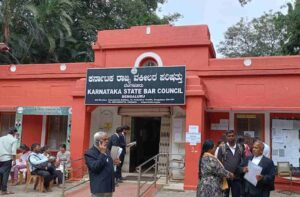Biodiversity refers to the variety and variability of life forms on Earth, encompassing different plants, animals, microorganisms, and their ecosystems.
It is important for maintaining the balance of natural systems, providing essential services like air purification, climate regulation, and resources for food and medicine.
As human activities increasingly threaten biodiversity, it has become necessary to develop policies and frameworks to conserve and manage it.
In India, the Biological Diversity Act, 2002, was enacted to safeguard biodiversity and promote the sustainable use of biological resources. Under this Act, institutions like the State Biodiversity Boards (SBB) and Biodiversity Management Committees (BMC) play key roles.
Powers and functions of these bodies under the Biological Diversity Act, including recent amendments (Act 10 of 2023), effective from April 1, 2024.
What is Biodiversity?
Biodiversity represents the wide range of ecosystems, species, and genetic diversity present in a region. India, known for its diverse ecosystems—ranging from tropical rainforests to deserts—has always been a rich repository of biodiversity.
The country is home to about 7-8% of all recorded species, despite covering only 2.4% of the world’s surface area.
Biodiversity is essential for ecological stability. It contributes to soil health, crop pollination, pest control, and climate change mitigation.
Moreover, it plays a fundamental role in the cultural, spiritual, and economic lives of people, especially in countries like India where rural communities heavily rely on biological resources for their livelihood.
Also Read: Functions of Biodiversity Management Committee under the Biological Diversity Act, 2002
The threat to biodiversity, arising from deforestation, pollution, habitat loss, climate change, and over-exploitation of resources, makes it imperative for nations to adopt stringent conservation measures.
In India, these efforts are organized through statutory bodies like the State Biodiversity Boards and Biodiversity Management Committees.
Powers and Functions of the State Biodiversity Board (SBB)
Establishment of the State Biodiversity Board (Section 22)
Under Section 22 of the Biological Diversity Act, the State Government has the authority to establish a State Biodiversity Board to implement the provisions of the Act within its jurisdiction.
The board, being a corporate entity, enjoys powers such as acquiring property, contracting, and managing biodiversity-related issues. However, in Union territories, the National Biodiversity Authority (NBA) assumes the role of the SBB, unless specifically delegated otherwise by the Central Government.
Composition of the SBB
The State Biodiversity Board is composed of:
- A Chairperson who possesses significant expertise in biodiversity conservation.
- Up to seven ex-officio members representing key state departments like Panchayati Raj and Tribal Affairs.
- Up to five non-official members who are experts in biodiversity, legal affairs, and equitable sharing of biological resources (as per the 2023 amendments).
Functions of the State Biodiversity Board (Section 23)
Section 23 of the Act outlines the primary functions of the State Biodiversity Board:
- Advisory Role: The SBB advises the State Government on matters related to biodiversity conservation, sustainable use, and equitable sharing of benefits arising from biological resources. The board operates in accordance with the regulations issued by the National Biodiversity Authority or the Central Government.
- Regulation of Section 7 Activities: The SBB plays a regulatory role in activities covered under Section 7 of the Act. These activities include the use of biological resources by Indian nationals and corporations, where prior approval must be obtained from the SBB.
- Benefit Sharing: Under the 2023 amendments, the SBB is empowered to determine the fair and equitable sharing of benefits as per regulations established by the National Biodiversity Authority.
- Additional Functions: The board performs any other tasks necessary to enforce the provisions of the Biological Diversity Act. These could include implementing state-specific biodiversity policies or conducting awareness programs on biodiversity conservation.
Powers of the State Biodiversity Board (Section 24)
Section 24 grants the SBB the power to restrict or reject activities that could be harmful to biodiversity conservation. Any person intending to undertake an activity involving biological resources must notify the board in advance.
If the board finds that the activity is detrimental to biodiversity or goes against the principles of fair and equitable sharing, it can restrict or reject the proposal. However, the board must offer the concerned party an opportunity to present their case before making a final decision.
Additionally, the SBB must publish all approvals or rejections in the public domain, ensuring transparency in its decisions.
Also Read: Difference Between Biological Resources and Traditional Knowledge
Application of Central Provisions (Section 25)
Section 25 allows for the application of Sections 9 to 17 (which deal with the National Biodiversity Authority) to the State Biodiversity Board, with modifications.
Key changes include references to the State Government instead of the Central Government and the use of the Consolidated Fund of the State instead of the Consolidated Fund of India. This allows for uniformity in the governance structure while accounting for state-specific needs.
Powers and Functions of the Biodiversity Management Committee (BMC)
Constitution of the BMC (Section 41)
Section 41 mandates the establishment of Biodiversity Management Committees at the Gram Panchayat, Nagar Panchayat, or Municipal Committee level. These committees are tasked with promoting conservation, sustainable use, and documentation of biological diversity in their respective regions.
BMCs also preserve the knowledge of local communities related to biodiversity, including landraces, folk varieties, and cultivars of plants, as well as domesticated animals and other life forms.
The 2023 amendments further empower state governments to establish BMCs at intermediate or district Panchayat levels to meet broader conservation goals.
Functions of the BMC
The BMC has a range of responsibilities, including:
- Conservation and Sustainable Use: The BMC must ensure the conservation of biological diversity, habitats, and traditional knowledge. This includes documenting species and practices that are vital for local communities.
- Advisory Role: The BMC advises the State Biodiversity Board and the National Biodiversity Authority on matters related to the use of biological resources or traditional knowledge in its jurisdiction. The NBA and SBB must consult with BMCs before making any decisions related to local biodiversity.
- Collection Fees: BMCs can levy collection fees from any entity accessing or collecting biological resources for commercial purposes. These funds can be used for local conservation activities.
Composition of the BMC
The composition of the BMC is determined by the State Government, but it must have between 7 and 11 members.
The 2023 amendments emphasize the need for representation from a diverse cross-section of the community, ensuring that those with traditional knowledge are included in decision-making processes.
Verdict
The State Biodiversity Board (SBB) and Biodiversity Management Committees (BMCs) are critical components of India’s biodiversity governance framework.
The SBB operates at the state level, advising governments, regulating activities involving biological resources, and ensuring fair benefit-sharing.
BMCs, on the other hand, operate at the grassroots level, engaging local communities in conservation efforts, documenting biodiversity, and facilitating sustainable use.















